If you find yourself needing smaller amounts of cash withdrawals or are limited due to your bank balance, you’ll benefit from knowing that some ATMs let you withdraw $1, $5, $50 and $100 bills. Recessionary times and financial hardships often come with low account balances, and that may mean limiting the amount you spend or withdraw at your local ATM.
Banks make money off ATM withdrawals – but, there can be ways around the fees, like knowing the best place to take out cash based on your bank, or by following simple steps that make cash withdrawals a little bit cheaper. Check out our top tips for withdrawing $1, $5, $50 or $100 bills near you, and learn how to take out exactly what you need without piling up ATM fees.
-
Can you find ATMs that let you withdraw ,
- What ATMs Give Out Bills?
-
What ATMs Let You Withdraw
- What ATMs Dispense Dollar Bills?
- Where to Find ATMs that Dispense 0 Bills?
- Do ATMs Only Give s Bills?
- What is the Minimum Withdrawal ATM?
- Which ATM Lets you Withdraw the Most Money?
- Can you get from an ATM Near Me?
- What Banks Have No ATM Fees Near Me?
- How to Avoid ATM Charges
-
FAQs About ATMs
- How Do ATMs Determine Which Denominations to Dispense?
- Which Bank Has The Most ATMs?
- Do All ATMs Charge a Fee?
- Can You Get Foreign Currency at an ATM?
- Is it Better to Exchange Currency or Use an ATM?
- How Does Overdraft Work at an ATM?
- Do ATMs Let You Choose Denominations?
- Can Someone Steal Your Info from an ATM?
- How Much Money Can I Withdraw From an ATM Per Day?
-
ATMs That Let You Withdraw ,
Can you find ATMs that let you withdraw $5, $1, $50, and $100 denominations?
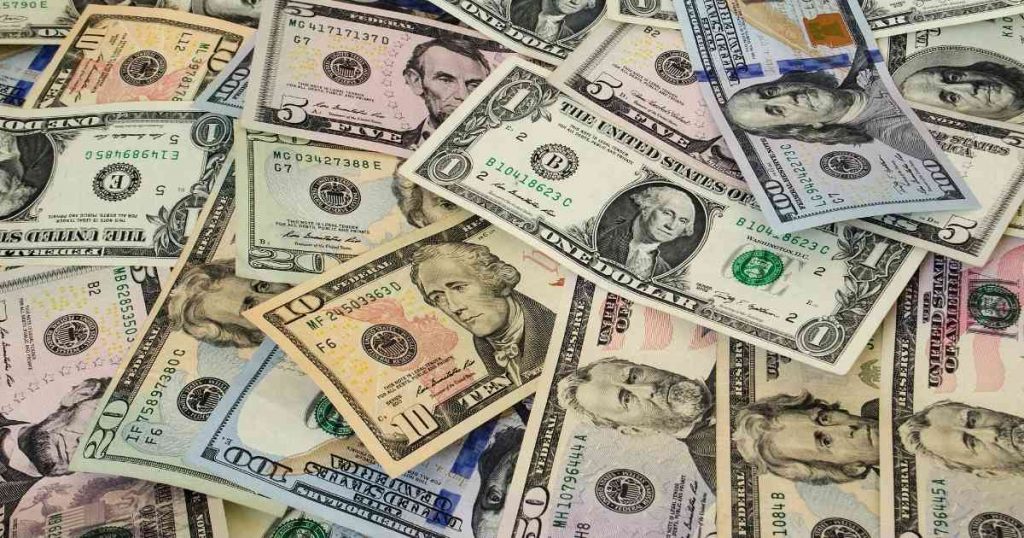
Short Answer: Many ATMs let you withdraw $5, $1, $50, and $100. Chase, PNC, Bank of America, and Fifth Third are among the top national banks with ATMs that let you withdraw more or less than 20 dollars.
From 2012 through 2013, PNC upgraded over half of its 7,200 ATMS to give out $5 and $1 bills, making it more convenient for its customers. Today, PNC has nearly 18,000 PNC and partner ATMs in more than 23,000 locations. The majority of these machines dispense $5 and $1 bills, allowing you to withdraw as much, or as little, cash in whatever increments you need.
Chase, as early as 2013, had about 400 ATM branch locations that dispensed $5 bills. Today, Chase has over 16,000 ATMs located inside branch locations, drive-thru areas, and vestibules. With over 4,700 branches nationwide, the majority give out $5 and $1 bills. The Chase ATM machines can even dispense coins!
See our related post on where to find an ATM near me that dispenses $10 and keep reading below to find out the best spots to withdraw cash around the country.
Lee TambiénHow To Make Automotive Audio system Louder With out Amp?What ATMs Give Out $5 Bills?
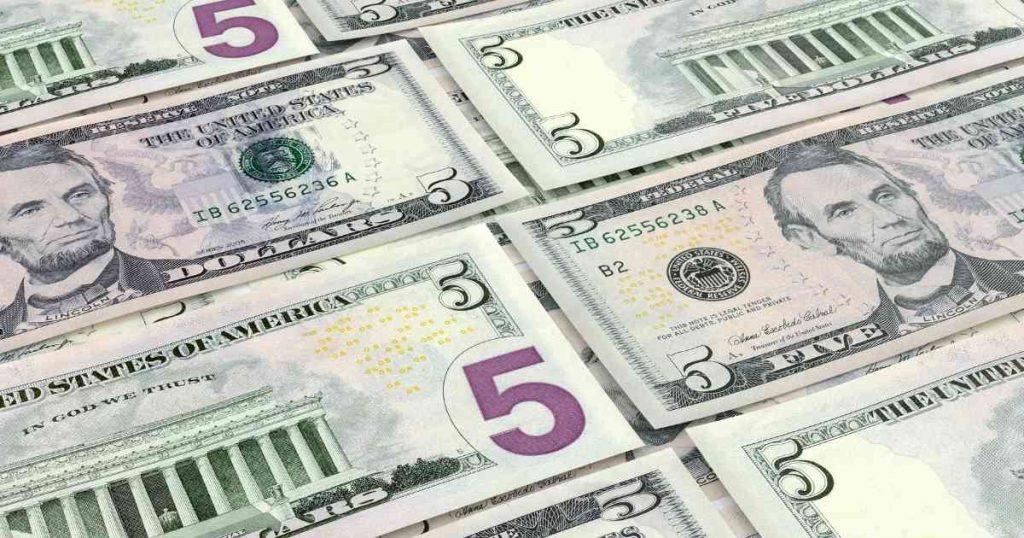
Consider a situation where you want to take out $25 – this can be challenging if the machine only provides cash in $10 increments. Usually, you can only take out $40 from machines that dispense $20 bills, but locating an ATM that gives out $5 and $10 bills can be helpful in this situation. In the cases where ATMs dispense bills as low as $5, you’re able to withdraw your cash in $20 and $5 or $10 and $5 denominations to provide you with the exact amount you need.
Here is a list of ATMs that give out $5 bills:
- PNC – ATM branch locations
- Chase – Inside ATM branch locations
- Fifth Third – Select new ATMs
What ATMs Let You Withdraw $1 Bills?
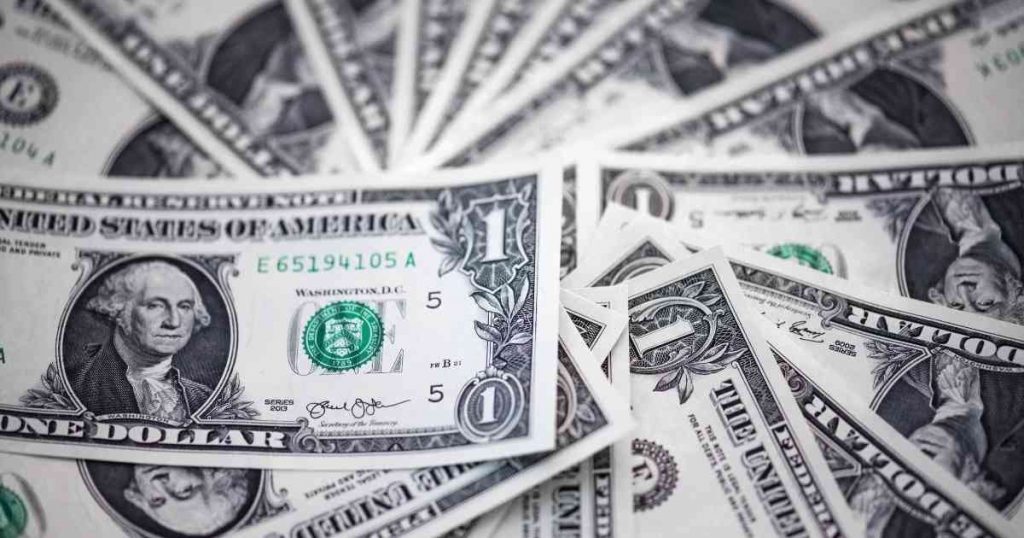
Some banks give customers the ability to withdraw cash in denominations as low as $1 to improve customer satisfaction and spending flexibility. This can be useful if you want to withdraw cash in smaller increments or odd numbers, such as $24 or $36. The banks below have ATMs that let you withdraw cash in $1 denominations:
- Chase – Inside the ATM branch locations
- PNC – ATM branch locations
- Fifth Third – Select new ATMs
What ATMs Dispense $50 Dollar Bills?
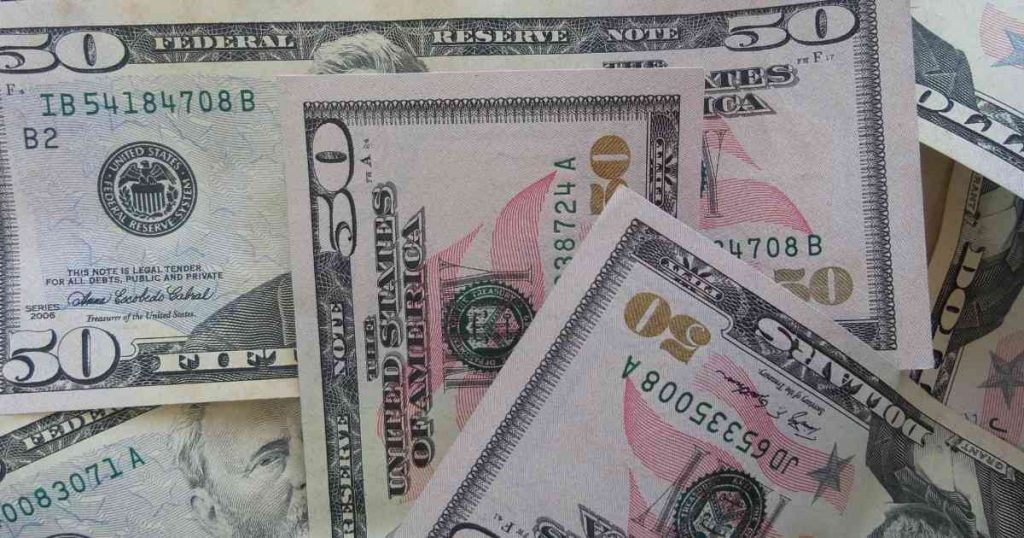
Typically, ATMs only give out bills in $20 increments. If you need $50, you have to withdraw $60 by taking out three $20 bills. Fortunately, some banks have upgraded their ATMs to dispense $50 dollar bills – but this is not currently a feature at most ATMs. The following ATM branch locations do allow $50 withdrawals:
- Wells Fargo – Select ATM branch locations
- Citibank – Varies by location
- Fifth Third – In the process of updating ATMs
- US Bank – Varies by the local branch
Where to Find ATMs that Dispense $100 Bills?
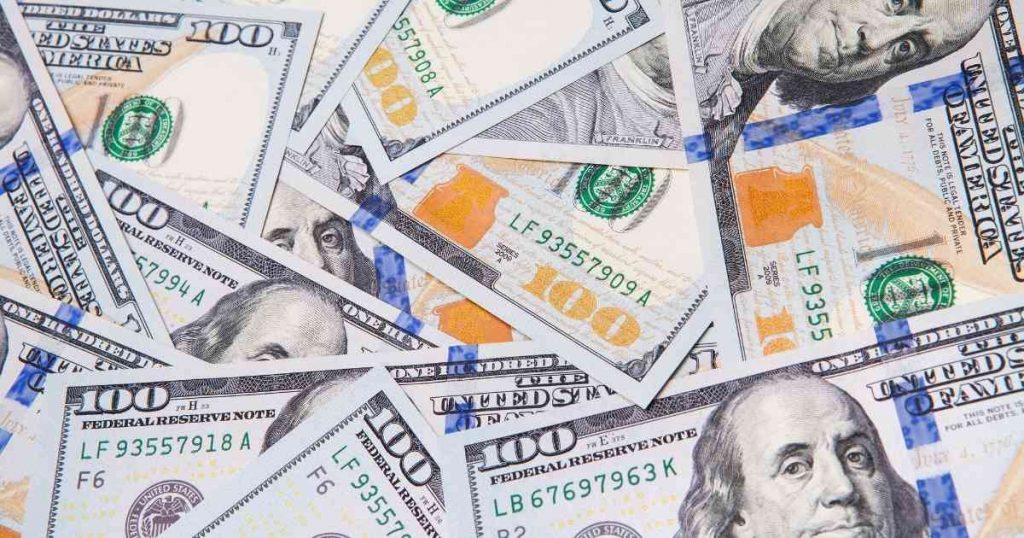
Finding ATMs that dispense $100 bills can be helpful if you’re looking to withdraw a significant amount of cash. Instead of carrying five $20 bills or two $50 bills, you can select just one $100 bill. The following ATMs allow you to take out $100 bills:
Here are ATMs that give out large bills:
Lee También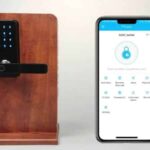 How To Discover My Husbands Iphone?
How To Discover My Husbands Iphone?- Bank of America: It updated the Bank of America ATMs to allow you to select your denominations up to $100 bills.
- Chase: ATMs inside the bank branch give out bills in increments of $1, $5, $10, $20, $50 and $100.
Do ATMs Only Give $20s Bills?
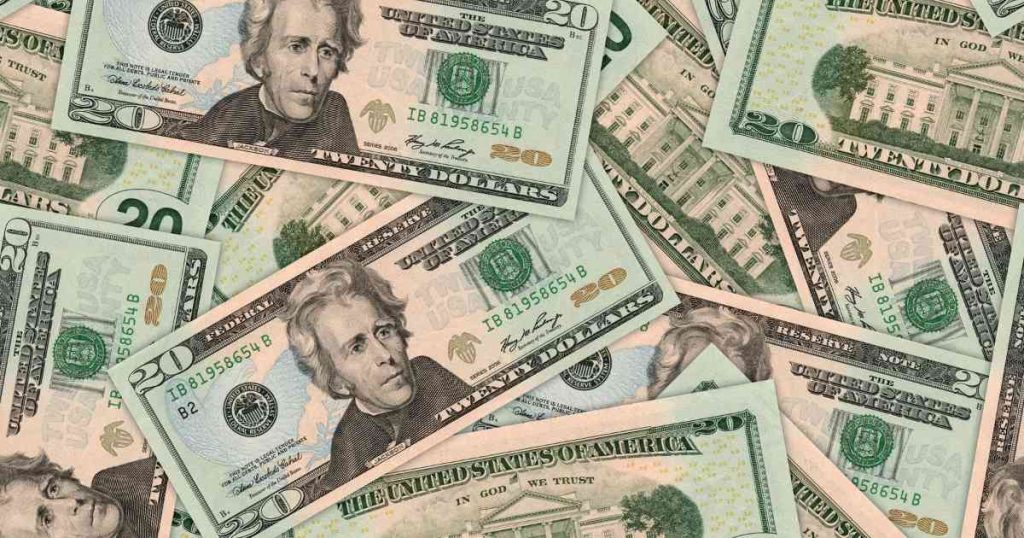
No, this is no longer the case – many banks have upgraded their ATMs to give out lower and higher denominations at most of their ATMs. For example, Chase and PNC have a new generation of ATMs that dispense bills as low as $1 and $5. Even if you only have a dollar to your name, you can still withdraw it at their ATMs.
Chase and Bank of America ATMs give out large bills, such as $50 and $100 bills.
Below are eight national banks that dispense bills ranging from $1 to $100.
PNC
All PNC branches dispense bills in $1, $5, and $10 increments, providing you with a range of options when it comes to taking out cash. Find a local PNC ATM that gives out $1, $5, and $10 here.
Chase
Inside the branch, customers are able to take out $1, $5, $10, $20, $50, and $100 bills – however, at their drive-thru ATMs, small bills are not available. Therefore, you’ll have to go inside the bank to receive a smaller amount of cash.
Chase also has bill limits – for example, you will be limited to the amount of $1 bills per transaction, but this varies by location. Find a local Chase ATM that gives out $1, $5, and $100 here.
Lee También What’s the Wells Fargo Notary Service Charge? Make Notary Appointment?
What’s the Wells Fargo Notary Service Charge? Make Notary Appointment?Bank of America
Bank of America has ATMs that dispense bills in $10, $20, and $100 increments and they recently updated their machines to allow customers to select the denomination of bills – so you request ten $10 bills, rather than one $100 bill if needed. Find a local Bank of America ATM within 100 miles here.
Wells Fargo
Wells Fargo’s smallest bill offered is $20 – however, some ATM locations do dispense $50 bills if you need denominations of $50 and more. Find a Wells Fargo ATM near me.
Citibank
Depending on location, most Citibank ATMs offer bills in increments of $10, $20, and $50. This is convenient if you need to take out either larger or smaller amounts. Find a Citibank ATM nearby my location.
Fifth Third Bank
Select Fifth Third Bank ATMs currently offer $1, $5, $50, and $20 bills. The bank is slowly updating the rest of its machines. Find Fifth Third Bank ATM near my location.
US Bank
US Bank currently offers customers $20 and $50 bills at their ATMs, however, it varies nationally depending on what branch you visit. For smaller increments, US Bank may not be the best option, but for those who need larger sums of cash, this is more convenient since you’re likely to receive larger bills from the ATM. Find an open US Bank ATM near me.
What is the Minimum Withdrawal ATM?
Just because an ATM offers small bills, it doesn’t mean that you can walk in and only withdraw $1, $5, or $10. Some banks set ATM withdrawal limits depending on the type of checking or savings account you have with them, and they also consider your banking history.
Lee También ¿Es posible transferir dinero de una tarjeta EDD a una cuenta corriente? Por supuesto
¿Es posible transferir dinero de una tarjeta EDD a una cuenta corriente? Por supuestoYou may have to inquire the bank about your minimum ATM withdrawal limit. If you are in a situation where you can’t withdraw the exact change you need, consider contacting your bank’s customer service department or inquire from a teller inside the bank.
Which ATM Lets you Withdraw the Most Money?
Banks set maximum withdrawal limits to protect their customers and themselves from different types of ATM fraud. Maximum withdrawal limits also help to ensure that ATMs don’t run out of cash. This can be beneficial on weekends or holidays when the branch is closed, as the ATM is not refilled with cash over a weekend or holiday.
ATM withdrawal limits among the 20 largest banks in the country range from $300 to $5,000. Many factors contribute to how much you can withdraw, such as account type, banking history, and availability of funds.You can request that your bank adjust your ATM withdrawal limit temporarily or permanently by contacting customer service. Nationwide, the following four banks allow you to withdraw the most money:
- Chase Bank: $500-$3,000
- Citibank: $1,000-$2,000
- Morgan Stanley Bank: $1,500-$5,000
- PNC: $500-$2,000
The above-mentioned banks let you withdraw $1,000 or more in one transaction if you meet the withdrawal requirements.
Can you get $35 from an ATM Near Me?
Several national bank branches have ATMs that dispense odd denominations, such as $35. Fifth Third Bank, Chase, and PNC dispense small bills that add up to $35 providing you with the exact amount you need. These banks have new ATM branches that dispense exact change using the following bills:
- Fifth Third Bank – $1, $5, and $20
- Chase – $1, $5, and $20
- PNC – $1, $10, and $20
What Banks Have No ATM Fees Near Me?
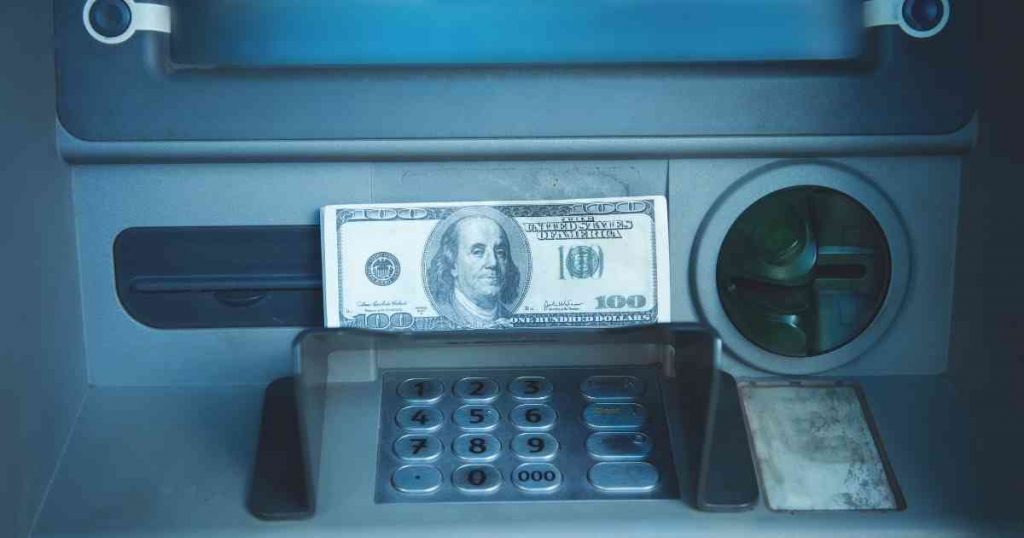
ATM convenience comes at a cost, especially when making out-of-network withdrawals at an out-of-network ATM. Your bank could charge you a fee of anywhere from $1.67 and up for using another bank’s ATM. You may also have to pay an additional $2.90 fee to the ATM owner at some locations. That could mean $4.57 in fees just to get your money from an out-of-network ATM.
Lee También ¿Acepta CVS Google Pay y Samsung Pay? Información completa
¿Acepta CVS Google Pay y Samsung Pay? Información completaEven if you use your ATM once a month or just a few times per year, these charges can quickly add up. The fees are disproportionate for low-balance accounts and are not a good way to save money. Finding banks near you with no ATM fees can save you a lot of money in the long run.
Luckily, there are banks out there that let you avoid ATM fees – find out more about their financial operations below.
Axos Bank
Axos Bank, formerly Bank of Internet USA, lets customers use any ATM within the U.S, fee-free. This perk is available with the following Axos accounts: CashBack Checking, Rewards Checking, and Essential Checking. The company also reimburses you by the end of the next business day for any amount charged by the ATM owner’s bank.
Radius
With a Radius debit card, you can use an out-of-network ATM in the United States for free. At the end of your statement cycle, you will be reimbursed for any fees charged by the ATM owner. These perks are available with Rewards Checking and Campion Checking accounts.
Charles Schwab Bank
Charles Schwab is the best bank for free international ATM access. For customers using the High Yield Investor Checking Account, your account is linked to a Schwab One brokerage account. This offers unlimited rebates and doesn’t charge any foreign transaction fees, which is a great monthly benefit if you travel regularly and have a cash preference.
Lee También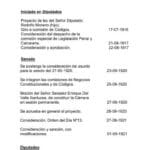 25 Concesionarios que pagan una congruencia desfavorable cerca de mí
25 Concesionarios que pagan una congruencia desfavorable cerca de míAlliant Credit Union
This is the best credit union for free domestic ATM access. The perk is available to customers using Alliant’s checking accounts, Teen Checking, and High-Rate Checking. Alliant has more than 80,000 fee-free ATMs, and they will reimburse you up to $20 per month for out-of-network fees charged by ATM owners nationwide.
Citibank
This is the best brick-and-mortar bank that offers fee-free ATM access for all Citibank checking accounts. They have more than 65,000 fee-free ATMs for their customers. They also partnered with Walgreens, CVS, Rite, Target, and Rite to offer fee-free ATMs at these retailers’ locations.
Ally Bank
You only need to operate a free online Interest Checking account to use any Allpoint ATM for free within the U.S. If you use an out-of-network account, Ally will reimburse you up to $10 per month for the fees charged by the ATM owner, which makes using your ATM card at other out-of-network banks easy.
State Farm Bank
To open a State Farm basic checking account, you will need a $25 minimum deposit. State Farm won’t charge you any fees for their ATMs or out-of-network ATMs. To qualify for unlimited ATM rebates, you will have to make at least one direct deposit to your account in every statement cycle – else, you will only be reimbursed up to $10 per statement cycle.
Chesapeake Bank
Chesapeake is an online-only bank. Their Clear Sky checking account waives up to $20 in ATM fees per month. Since they’re online-only, you’ll always be using out-of-network ATMs to withdraw cash. If you take out cash regularly, this might be a bank to avoid if you don’t want standard limits applied to your mobile banking.
How to Avoid ATM Charges
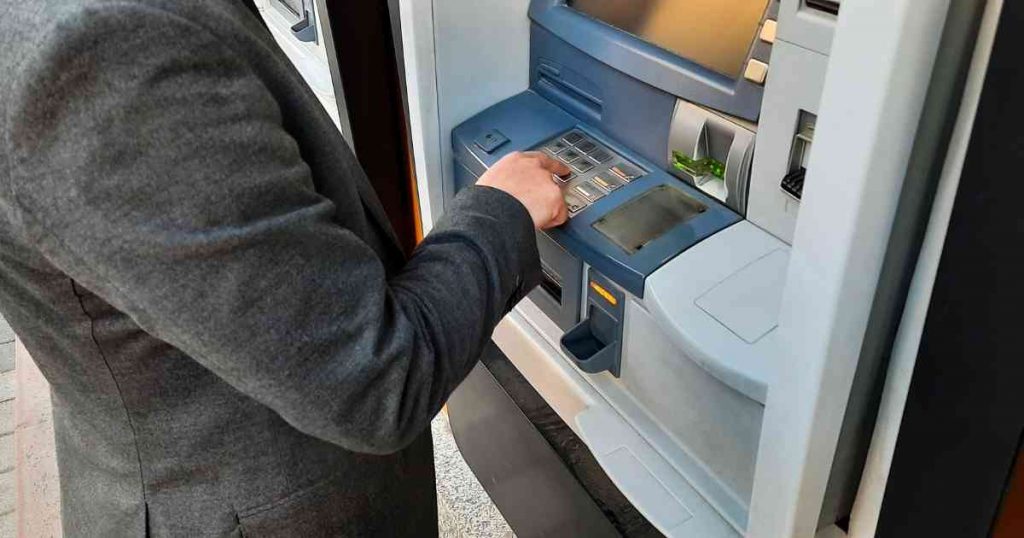
If you’re low on cash and trying to live frugally, the last thing you want to do is lose more money to ATM fees. There are a number of reasons why withdrawing money from an ATM would cost you money, and small charges can add up quickly each month. Once you know what factors contribute to ATM charges, you can prevent losing more money to unnecessary ATM fees. Money saved is money earned when it comes to these expenses.
Use your bank’s ATMs
Try to find an ATM that belongs to your bank when making a withdrawal. Most banks will charge you an ATM fee if the card you’re using is from a different financial institution, and doing it several times a month will add up to your expenses. A quick Google search will give you the location of the closest ATM of your financial institution near you. Using your own bank’s ATM instead of the closest location can save you precious dollars over time.
Find out your standard limit for cash
Every bank has different monthly, weekly, or daily withdrawal limits for how many times you can take out money from an ATM, even if it belongs to your bank. Once the limits are exceeded, you’ll be charged for withdrawing money each time in the form of a flat fee.
To ensure that this doesn’t happen, keep track of the number of times you use an ATM per month and how much you withdraw. Using mobile banking or keeping the paper ATM receipts handy can give you a good idea of your expenses.
Use your debit card
Do you use cash everywhere? While that’s a good way of subconsciously reducing expenses, it defeats the purpose if you’re spending extra money on ATM fees. Using a card can help you reduce these fees because debit cards usually don’t have a limit on how many times you can swipe them.
Keep a note of exactly how much cash you’ll be needing throughout the week or the month, and take out the amount in one go to reduce ATM fees. If there are certain places where you can only pay in cash, make an estimate of how much the expenses at these places will be and try to have the required amount of cash on you.
Limit credit card withdrawals
Using a credit card in itself is a recipe for higher expenses, but using it to withdraw cash from an ATM will definitely come with high ATM fees. While debit cards come with a certain number of free ATM withdrawals when carried out at your bank’s ATMs, credit cards will incur a high fee for cash withdrawals.
Make sure to either leave your credit card at home to avoid taking out cash with it or remember to only use it for in-store purchases by swiping or tapping it. If you’re trying to live frugally, the best way to do it is by forgetting your credit card altogether.
Get cashback
Cashback is an excellent way to save some money on every purchase you make. A number of merchants offer cashback services at no extra cost, which means that every purchase you make will deposit a certain percentage of that amount back in your account immediately on a few working days. Cashback is more common when you go for special cards from stores like Amazon – however, make sure that you don’t spend more than you need to just to get cashback benefits.
FAQs About ATMs
How Do ATMs Determine Which Denominations to Dispense?
Most ATMs follow the principle of “last note to be dispensed in the lowest denomination available in the ATM” at the time of withdrawal. In short, it means that ATMs must dispense cash in the lowest denomination available at the time of withdrawal.
So, if you’re withdrawing $20 from an ATM and the only bills left in the machine are $5 and $10 bills, you’ll receive two $10 bills.
Which Bank Has The Most ATMs?
When it comes to ATM access, Bank of America has the most with over 17,000 machines across the country. That’s followed by Chase with 16,200 ATMs and Wells Fargo with 13,000 in the US.
Do All ATMs Charge a Fee?
Many banks charge a fee for using an ATM outside of their network, and some ATMs also charge a service fee.
So, why do ATMs charge fees?
Short Answer: It costs money to maintain an ATM and banks need to recoup those costs. By charging a fee for ATM use, banks are able to cover the cost of things like ATM maintenance, transaction processing, and network fees.
Can You Get Foreign Currency at an ATM?
No, you cannot get foreign currency from an ATM. They’re designed to dispense the local currency. For example, an ATM in the United States will dispense US currency.
So, if you’re travelling to a country where the currency is different from your own, it won’t dispense foreign currency. You’ll need to have enough of your own currency on hand in order to withdraw the amount of local currency that you’ll need.
Is it Better to Exchange Currency or Use an ATM?
While there are pros and cons to both methods, withdrawing cash from an ATM is generally the best way to get money. For one thing, it’s more convenient than exchanging currency. Although ATMs are found in almost every major city, you’ll often get a better exchange rate from a machine.
Of course, you’ll need to ensure your bank cards work overseas before you leave home. But if they do, using an ATM is usually the best way to get the cash while travelling.
How Does Overdraft Work at an ATM?
If you do not have enough money in your account to cover the transaction, you may be charged an overdraft fee. Unfortunately, overdraft fees can add up quickly and be costly. So, it’s important to understand how overdraft fees work.
Generally, you’ll be able to make ATM withdrawals and debit card purchases even if you do not have enough funds at the time of the transaction. However, the bank will typically charge an overdraft fee for each transaction. In addition, the bank may also charge a daily overdraft fee until the balance is brought back into positive territory.
If you’re worried about overdrawing your account, consider linking it to a savings account or line of credit. This way, if you overdraw your account, the funds will automatically transferr from the linked account to cover the negative balance or shortfall.
Do ATMs Let You Choose Denominations?
Yes, some bank ATMs let you choose specific denominations. For example, you may be able to choose to withdraw two $20 bills and four $5 bills instead of three $10 bills and one $20 bill. It can be helpful if you need to make change for something or if you want to break a larger bill into smaller denominations.
Custom denominations can also be useful for people who are trying to budget their cash expenditures or using the cash wallet system. By withdrawing a set denomination of money in smaller bills, it’s easier to keep track your spending.
Can Someone Steal Your Info from an ATM?
Yes, someone can steal your information while making an ATM withdrawal. While shoulder surfing identity theft and seeing your PIN is possible, there are several safeguards in place to prevent this type of fraud.
For one, most PIN entry screens are designed to be used at waist level. As a result, it’s more difficult for someone to see your PIN from a distance.
In addition, many modern ATMs have PIN entry pads that are only activated when you insert your card. So, someone would have to be standing very close to see your PIN.
How Much Money Can I Withdraw From an ATM Per Day?
Depending on your bank, your daily ATM withdrawal limit can range from $300 to $1000. The limit applies to the total amount of cash you can withdraw from all ATMs in a 24-hour period. If you need to withdraw a large denomination, you’ll need to visit your bank branch and speak to a teller.
Keep in mind that there may be additional fees involved in withdrawing large sums of cash from your bank. So, if you’re looking to withdraw a large amount of money, it’s best to plan ahead and make arrangements with your bank beforehand.
ATMs That Let You Withdraw $5, $1, $50, and $100 Near Me Summary
National banks have and continue to upgrade their ATMs to offer customers more flexibility. Today, there are banks with thousands of ATMs across the country that will let you withdraw bills as low as $1, $5, and $10, or large $50 and $100 bills.
To avoid being hit with the annoying out-of-network fees, stick to your bank’s ATMs or consider having a debit card from any of the above banks that offer fee-free ATMs and rebates for out-of-network withdrawals.

TE PUEDE INTERESAR